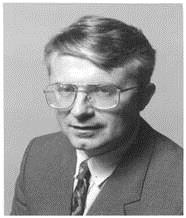Concept Mapping
Scenario A
Although Samantha is a language teacher, she wants her students to think logically besides achieving grammatical literacy to the expected standard. Somewhat different from other language teachers, Samantha asks students to think about all related elements associates with a theme in narrative writing, drawing from their prior experiences and knowledge.
Students then need to elaborate the inter-relationships between the elements (if any) in a graphical manner. Only after peer/group consensus in correctness of the ideas has been built, can students can start to write up the content according to the graphical illustration.
Scenario B
Peter is a student who always performs badly in History tests, and in today lesson he said that he has problems dealing with causal relationship concerning the imprisonment of Louis XIVs financial minister (Fouquet). As a teacher, what strategies will you use to help Peter to organize these concepts?
A Passage from the History textbook:
A witness recalled the historical events of Louis XIV
In 1661, the King Louis XIV decided to govern the country by dictatorship and he dismissed his financial minister. The prime minister called le cardinal de Mazarin had died in the previous month.
I recalled the history well. In this era, I was working in the service of the king. In August, a month before the Kings decision, Fouquet, the financial minister, invited the Court to a grand feast in the castle. We helped with the magnificent show organized by Moliere and the musician Lully. The king noticed Fouquet was richer than him. On that day, he believed that his financial minister might have stolen the money of his Royal family. After a few months, he decided to imprison Fouquet. (Adapted from Echo, CLE international Press)
Sample of a concept map:

Definition
A concept map is:
-
a diagram showing the relationships among concept
-
a graphical tool for organizing and representing some domain knowledge
-
a technique for visualizing the hierarchical structure of concepts in which the most general concepts normally are on top
Concept maps reveal the structural pattern in the material and provide the big picture, including
-
concepts, usually enclosed in circles or boxes of some type
-
relationships between concepts or propositions, indicated by a connecting line and linking word between two concepts.
In addition, concepts are presented in hierarchical manner, the most general concepts on top
Basic Assumptions and Principles
The use of concept mapping is often linked to the constructivist view of learning, and often makes a good starting-point for constructivist teaching.
Plotnick (1997) listed five purposes of concept mapping to enhance meaningful learning:
-
To generate ideas (brainstorming);
-
To design complex structures (long texts, hypermedia, large web sites);
-
To communicate complex ideas;
-
To aid learning by explicitly integrating new and old knowledge
-
To assess understanding or diagnose misunderstanding
Primary Theorists:
David Ausubel

Figure 1. David Ausubel. Source: http://simplebooklet.com/userFiles/a/1/0/7/7/1/3/3CAMqilN67rxirJGzdHqYB/XbDLalCu.jpg
The fundamental idea in Ausubels cognitive psychology was influenced by Jean Piaget.
-
learning takes place by the assimilation of new concepts and propositions into existing concept and propositional frameworks held by the learner
-
understanding concepts, principles, and ideas are achieved through deductive reasoning
-
as opposed to rote memorization, meaningful learning requires three conditions:
-
the material to be learned must be conceptually clear and presented with language and examples relatable to the learners prior knowledge
-
the learner must possess relevant prior knowledge; and
-
the learner must choose to learn meaningfully.
-
Ausubel (1960) suggested that Advance Organizers might facilitate meaningful learning and retention of new incoming information by instructor who
-
prompts the student regarding pre-existing superordinate concepts that are already in the student’s cognitive structure; and
-
provides a context of general concepts into which the student can incorporate progressively differentiated details.
While Advance organizers are used in good “transmissive” teaching, e.g. direct instruction, such teaching is different from simple rote learning, since learners are encouraged to relate new knowledge to what they already know.
Ausubel distinguished between two kinds of advance organizer who provide the necessary scaffolding for students:
-
comparative organizers activate existing schemas by integrating new ideas with basically similar concepts in cognitive structure, as well as distinguishing increasing discriminability between new and existing ideas which are essentially different but confusedly similar; and
-
expository organizers provide the basic concept at the highest level of generalization that students will need to understand the upcoming information unfamiliar to the learner
Joseph Novak

Figure 2. Joseph Novak. Source: http://educa.univpm.it/curriculum/jdn_pho.jpg
Novak’s work is based on the cognitive theories of David Ausubel, who stressed the importance of prior knowledge in being able to learn new concepts.
- Learner and Teacher
-
The teacher element was presented to include any event where a learner is guided in acquiring new meanings.
- Knowledge
-
Knowledge is treated as largely conceptual or propositional in structure.
-
New knowledge construction occurs when creative people engage in high levels of meaningful learning.
- Context
-
Context includes not only the structure of a specific learning event but also the multiple levels of physical and social environment in which the learning event occurs.
- Evaluation
-
Evaluation serves to inform the learner and the teacher about how well the new meanings have been acquired and/or applied.
Meaningful learning underlies the constructive integration of thinking, feeling, and acting leading to empowerment for commitment and responsibility(Novak, 1998 , p. 15)
Novak and Cañas (2006) also made the point that cognitive maps can favor integration of concepts and reduce misconceptions and cognitive load. They then outlined a few recommendations for instructional designs in which concept maps are used:
-
a teacher may provide a focus question: a question that clearly specifies the problem or issue that the concept map should resolve for a particular problem or situation;
-
the starting point for the construction of the concept map can be a list of concepts, which all students should include in their map;
-
these concepts should be established from the most general and most inclusive concept to the most specific, least general, concept;
-
expert skeleton maps serve as a guide or scaffold or aid to learning in a way analogous to the use of scaffolding in constructing or refurbishing a building;
-
the next step is to construct a preliminary concept map by helping students to recognize that all concepts are in some way related to one another;
-
the map should be revised, concepts re-positioned in ways that improve clarity.
Resources
Key Works
-
Ausubel, D. P., Novak, J. D., & Hanesian, H. (1968).Educational psychology: A cognitive view.
-
Novak, J. D. (1990). Concept mapping: A useful tool for science education. Journal of research in science teaching, 27(10), 937-949.
-
Ruiz-Primo, M. A., & Shavelson, R. J. (1996). Problems and issues in the use of concept maps in science assessment. Journal of research in science teaching, 33(6), 569-600.
Successful Examples
Further Reading
-
Ausubel, D. P. (1960). The use of advance organizers in the learning and retention of meaningful verbal material. Journal of educational psychology, 51(5), 267.
-
Novak J. D. Learning, Creating, and Using Knowledge: Concept Maps as Facilitative Tools in Schools and Corporations. Erlbaum; Mawah, NJ: 1998.
-
Novak, J. D., & Cañas, A. J.(2006). The theory underlying concept maps and how to construct them. Florida Institute for Human and Machine Cognition, 1.
-
Plotnick, E. (1997). Concept mapping: a graphical system for understanding the relationship between concepts: an ERIC digest. Clearing house on Information & Technology.